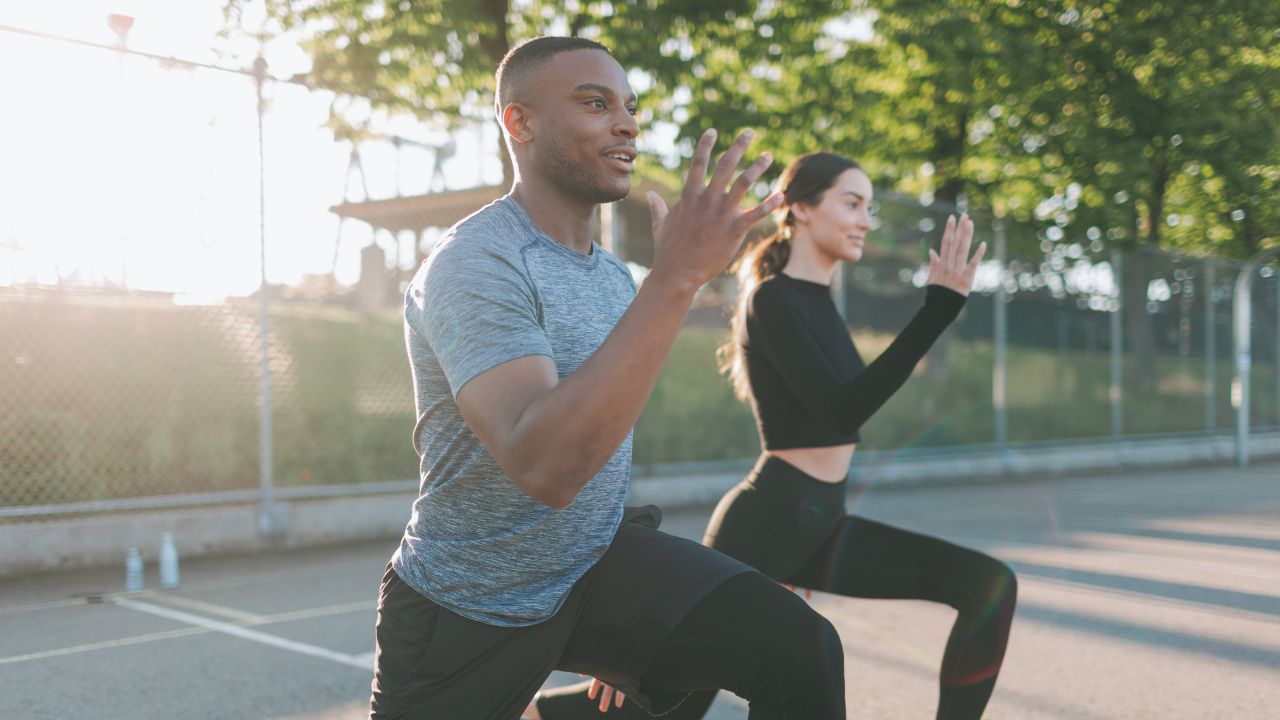The Role of Movement & Exercise in Health and Wellness
Movement and exercise are foundational elements of a healthy lifestyle. While many think of physical activity as merely a way to stay in shape, its influence extends far beyond physical health. Regular movement not only strengthens the body but also nurtures mental well-being, supporting a balanced and vibrant life. Our bodies are designed to move, and when we neglect movement, we disrupt the natural flow of energy, affecting everything from muscle function to mood regulation.
Exercise is the key to maintaining healthy body systems, from cardiovascular health to digestive function. Regular movement boosts circulation, improves metabolic processes, and supports brain health. But the benefits aren’t limited to just the physical body. Exercise is also a powerful tool for maintaining mental clarity, emotional balance, and stress resilience. When you move, you release endorphins, natural chemicals in the brain that improve your mood and reduce feelings of anxiety or depression. As a result, exercise plays a vital role in promoting overall wellness, making it a non-negotiable part of daily life.
Benefits of Incorporating Exercise into Daily Life
Incorporating exercise into your daily life yields numerous benefits that span both physical and mental health. First and foremost, physical activity improves heart health. Whether it’s through aerobic exercise like running or walking, or strength training, exercise helps maintain a healthy heart by improving circulation and lowering the risk of cardiovascular diseases. But the impact of movement goes beyond just your heart. Regular exercise strengthens muscles and bones, reduces the risk of chronic diseases such as diabetes and arthritis, and promotes flexibility, reducing the likelihood of injuries.
Mentally, movement is a powerful tool for boosting mood and combating stress. Exercise has been shown to reduce cortisol levels, the hormone responsible for stress, while also promoting the release of endorphins. These mood-enhancing chemicals make us feel happier and more at ease. Engaging in physical activity can also improve sleep patterns, as exercise helps regulate the body’s natural circadian rhythm. For those struggling with mental fatigue or anxiety, exercise can be a natural remedy, helping to clear the mind and enhance focus and concentration. Ultimately, exercise becomes a cornerstone for both physical vitality and emotional well-being, helping individuals feel more energized, confident, and capable.
Different Forms of Movement & Exercise
Movement and exercise come in a variety of forms, offering something for everyone. Whether you’re a beginner or a seasoned athlete, it’s essential to find the type of exercise that suits your goals and lifestyle. Cardiovascular exercise, such as running, cycling, or swimming, is great for improving heart health, endurance, and weight management. If building strength is a priority, strength training using free weights, resistance bands, or bodyweight exercises is an excellent choice. These exercises increase muscle mass, improve metabolism, and strengthen bones.
Yoga and Pilates offer a gentler approach that focuses on flexibility, balance, and mindful movement. These practices promote body awareness, reduce stress, and improve posture. For those seeking a more intense workout, HIIT (High-Intensity Interval Training) can be highly effective. This form of exercise alternates between short bursts of intense activity followed by periods of rest, providing a full-body workout that enhances strength and endurance. Exploring different exercise modalities allows you to discover what feels best for your body, your goals, and your lifestyle. A combination of various types of movement can provide a well-rounded routine that keeps things exciting while ensuring that all areas of your health are addressed.
Creating a Sustainable Exercise Routine
Starting a new exercise routine can feel daunting, but creating a sustainable plan is crucial for long-term success. One of the first steps is setting realistic, achievable goals. If you’re new to exercise, it’s essential to start slowly and gradually increase the intensity and duration of your workouts. Begin with short, manageable sessions, and then build up as your body becomes accustomed to the movement. This approach helps prevent burnout or injury and sets you up for a successful fitness journey.
Another critical component of building a sustainable routine is consistency. Exercise should be treated like any other important task in your life, and it’s essential to schedule regular movement into your daily or weekly calendar. It might be tempting to skip a session here or there, but maintaining consistency over time is what brings results. To stay motivated, choose activities you enjoy. Whether it’s dancing, hiking, or team sports, finding fun ways to move ensures that exercise doesn’t become a chore but rather an activity you look forward to. Working with a Certified Health & Wellness Coach can also be a helpful way to keep you accountable and provide expert advice on how to stick with your routine long-term.
The Mind-Body Connection in Exercise
Exercise is more than just a physical act; it’s deeply connected to our mental and emotional states. Engaging in movement allows us to become more aware of our bodies, tuning into our physical sensations, breath, and energy levels. This mind-body connection fosters a deeper sense of presence and mindfulness. When we exercise, we are not only improving our bodies but also strengthening our mental resilience. Regular movement has been shown to reduce anxiety and depression, increase emotional regulation, and enhance cognitive function.
Additionally, movement is an excellent tool for stress management. Physical activity triggers the release of endorphins, chemicals that promote feelings of happiness and relaxation. These endorphins help buffer the effects of stress and elevate mood, leaving us feeling more balanced and grounded. As a result, exercise becomes an integral part of managing mental health, allowing individuals to approach life’s challenges with greater calm and clarity. Regular physical activity nurtures both mental and physical well-being, fostering an overall sense of harmony in our daily lives.
Understanding the Role of a Certified Health & Wellness Coach in Movement & Exercise
A Certified Health & Wellness Coach plays a pivotal role in guiding individuals through their movement and exercise journey. By working with a coach, individuals can receive personalized advice and support to help them achieve their health and fitness goals. A health coach can assess your current physical abilities, identify areas for improvement, and design a workout routine tailored specifically to your needs.
The coach-client relationship provides accountability, motivation, and guidance. A health coach helps set realistic goals, ensures proper form during exercises, and provides ongoing encouragement to keep clients on track. Whether it’s overcoming plateaus, working through injuries, or refining techniques, a Certified Health & Wellness Coach helps ensure that you are making progress in a safe and effective way. By having someone to offer expert advice and personalized plans, individuals are more likely to stay committed to their routines, making movement and exercise a lifelong habit.
Making Movement Enjoyable and Fun
Exercise doesn’t have to feel like a punishment. In fact, when movement is enjoyable, it becomes easier to incorporate it into your daily life. Finding fun and engaging ways to move your body can make a huge difference in sticking to your routine. Consider joining a dance class, taking up a sport, or hiking in nature. Many people find that they enjoy movement more when they do it with others, so participating in group fitness classes or sports teams can be both social and beneficial for your health.
Incorporating variety into your workouts also helps keep things interesting. Instead of following the same routine day after day, try switching up your activities regularly. One day, you could go for a run; the next, you could try yoga or strength training. By keeping your workouts diverse and exciting, you’ll find that you’re more likely to stay committed. Make movement something to look forward to, and exercise will no longer feel like a task but rather a source of joy and fulfillment.
Movement & Exercise for All Ages and Abilities
One of the best things about movement and exercise is that it can be tailored to individuals of all ages and abilities. Whether you’re a child, adult, or senior, engaging in physical activity is vital for maintaining health and wellness throughout the lifespan. Children benefit from regular exercise as it promotes healthy growth and development. It helps with motor skills, coordination, and builds a foundation for lifelong fitness habits.
For adults, exercise is essential for maintaining energy levels, boosting productivity, and preventing chronic illnesses. As we age, physical activity becomes even more important to maintain mobility, balance, and muscle strength. For seniors, low-impact exercises such as swimming, walking, or gentle yoga can improve flexibility, reduce joint pain, and support overall well-being. The goal is to find exercises that are appropriate for the individual’s fitness level, ensuring that they are challenging yet manageable, promoting health without causing strain or injury.
Staying Motivated and Overcoming Common Challenges
Staying motivated to exercise regularly can sometimes be challenging, but several strategies can help you maintain a steady routine. Setting clear and achievable goals is a great way to stay focused. Break your larger fitness goals into smaller, more manageable tasks, and celebrate the small wins along the way. Tracking progress, whether it’s through a fitness app or a journal, helps keep you motivated and provides a sense of accomplishment.
It’s also essential to recognize and overcome barriers to exercise. For some, a lack of time can be a significant challenge. By scheduling workouts like appointments and prioritizing them, you ensure they become a non-negotiable part of your day. For others, a lack of motivation can be the main obstacle. Working with a Certified Health & Wellness Coach can help keep you accountable and offer strategies to reignite your motivation when it wanes. Overcoming setbacks is part of the process, and with the right support, you can continue to make progress.











